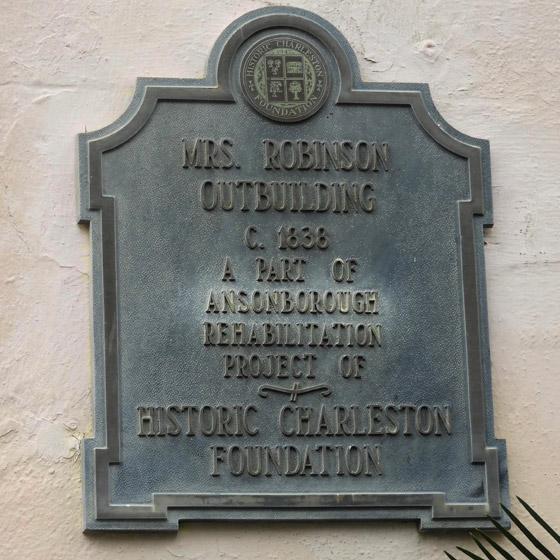
Ansonborough: A Great Experiment
We'll explore Ansonborough, the first suburb of Charles Town, for the next few weeks. For an easy reference of what this area covers today, picture yourself on East Bay Street, the east boundary, in front of the Harris Teeter grocery store and consider several streets north to Calhoun Street, several streets south to Hasell Street with the west boundary as Anson Street. Now you've got a snapshot of the area of Ansonborough, somewhat expanded from its original acreage.
Ansonborough (and Anson Street, of course) was named for Captain George Anson, a British Naval officer assigned at age 26 with his own command to defend Charles Town and its environs from pirates. He served in this capacity from 1724 to 1735. In 1726, Anson purchased approximately 64 acres of land that later became known as Ansonborough. Legend has it that Anson won the money for the land in a card game. Anson went on to a successful career in the British Navy, becoming the First Lord of the Admiralty in 1751 and Admiral of the Fleet in 1761. He married Lady Elizabeth Yorke in England, and while they had no children, Captain Anson's name lives on through Ansonborough.
The great fire of 1838 wiped out many of the structures in Ansonborough, so most of the buildings now date after that year. This area is now one of the most desirable places to live in the city, mainly due to an experiment conducted by Historic Charleston Foundation in the 1960s.
By the mid-twentieth century, most of the structures in Ansonborough were dilapidated, unsound, and crumbling; many were abandoned and in danger of being demolished. However, restoration and renovation are deeply embedded in Charleston's history, and Ansonborough's slum conditions were simply a new challenge for our preservationists. Historic Charleston Foundation, founded in 1947, refused to let Ansonborough die. The Foundation rose to the occasion with an experiment that not only transformed the neighborhood of Ansonborough, but also pioneered a preservation program that has been copied throughout the United States to restore not just historic buildings, but entire neighborhoods.
The Foundation heavily invested in the Ansonborough neighborhood, purchasing distressed properties, stabilizing and restoring them before selling to others who shared the Foundation's passion for preservation. With a clear vision and the support of the community, the project included a revolving fund for the financial outlay, replenished from the profits when a restored property was sold.
Whether strolling through the area or attending a private Homes and Gardens tour, Ansonborough delights and inspires visitors and locals alike. We'll visit several of these historic properties over the next several posts.



